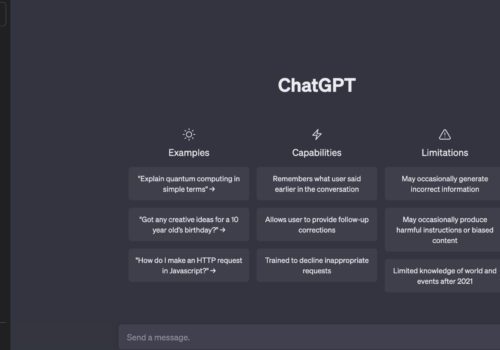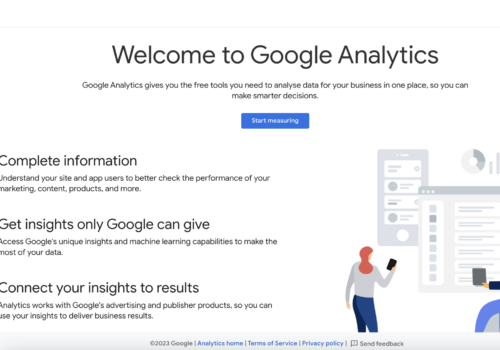Let’s begin with a question: which form of marketing is best suited for digital marketers? The answer is undoubtedly “content marketing.”
However, to fully understand this concept, let’s explore the broader spectrum of digital marketing.
Marketing has become more focused and practical in recent years. Marketers now recognize that the best way to build a customer base is by creating quality content related to their service. In fact, more than 82% of marketers have reported a positive ROI from their blogs alone.
Content marketing differs from traditional marketing in that it promotes the need for a service rather than the service itself. After all, nobody likes to see a bunch of irrelevant advertisements popping up.
Check out the image below, which illustrates the three stages of the content marketing funnel:
Companies have started to focus on building relationships with potential customers through content marketing. They have recognized that successful businesses thrive on strong and long-lasting relationships with customers.
Content marketing has become a significant means of providing value to customers, and statistics strongly support this phenomenon.
In fact, studies have shown that 68% of consumers have a more positive perception of a brand after consuming its content.
What Does Content Marketing Bring to Your Business?
Content marketing has been on the rise, and it is much more than a coincidence. There are various advantages of opting for content marketing in the strategic marketing mix. Let us see a few of them:
- Increased Website Traffic: Content marketing is an effective way to drive traffic to a website, which is crucial for businesses as their website is their representation of the outside world. By using content marketing, new people are attracted or directed to business websites, which helps to enhance other SEO efforts. Research shows that investing less than six hours a week in content marketing can lead to an increase in website traffic for 91% of marketers.
- Better Website Optimization: Content marketing, being an off-page SEO, helps a business owner optimize the actual website based on the feedback received on its content from external sources. This helps deliver the best value to consumers when they scramble through a company’s website.
- Word-of-mouth Promotions: Content marketing is a strategy that aims to create a positive image of a service or product in consumers’ minds. If executed effectively, this strategy can lead to word-of-mouth promotions, which can be very beneficial for other marketing efforts. Content marketing has become an important part of marketing and, when combined with a well-planned marketing strategy, can help generate leads. If you’re wondering about the best content marketing practices for lead generation, don’t worry, we’ve got you covered.
9 Effective Lead Generation Practices You Can Implement in 2025
1. Visuals Take You a Long Way
Content marketing is all about capturing people’s attention. There are countless materials available on the internet, all competing for viewership.
However, the content that tends to get the best response is the one that resonates with the viewer. To attract more viewers, it’s important to improve the visual aspect of your content.
Even if your content is superior to others, it won’t be successful unless it’s visually appealing and engaging enough to grab the audience’s attention.
To make your content more attractive, you can add various elements to your content space. These can include infographics, which are useful for those who are short on time and prefer quick reads instead of going through an entire blog.
You can also include pictures related to your content to add a visual vibe and prevent the content from becoming monotonous. This will help you in converting viewers into leads.
Canva, Visually, and Venngage are some helpful tools you can use to embed visuals in your content.
2. Tap your Target Consumers
It’s important to ensure that your content reaches your desired audience. However, before you can do that, you need to identify who your target consumers are.
Take the time to segment them wisely, as without a well-defined consumer set in mind, all of your marketing strategies will be ineffective and a waste of time.
One way to gain insight is by distributing actual product samples. To start, focus on the product or service itself.
This will give you a direct idea of how different groups respond, allowing you to choose your target audience accordingly.
By combining this information with a strong concept, you can create more effective and responsible content that will also lead to higher lead generation.
3. Focus On The Long-term Impact
Creating content is not a task that can be accomplished overnight. It requires substantial time and effort, along with extensive research, multiple revisions, and significant investments.
Therefore, the content must provide long-term benefits to the company.
Content marketing involves modifying the same information multiple times based on observations and responses. This can only be achieved if the actual content remains relevant for an extended period.
Updating your old blog posts regularly can lead to 74% stronger results, and this strategy has been known to increase website traffic by 402%.
To ensure the longevity of your content, you should consider various future factors, such as the lifespan of the publishing source, how relevant your content is to changing conditions, and other similar factors while developing your content strategy.
You should also plan your content meticulously to ensure that it generates leads.
4. Call–to-Action decides the Next Step
Content marketing relies heavily on effectively communicating with the reader or viewer. Once a viewer engages with your content, they should become fully immersed in the subject matter.
This immersion not only educates the viewer but also builds trust in your content. However, after this engagement, where do you want your consumer to go? Back to the sea of lost viewers?
Certainly not! This is where the Call to Action (CTA) comes into play. A well-crafted CTA has the potential to convert a prospect into a lifelong customer.
It’s worth noting that approximately 90% of viewers who read the headline also read the CTA copy. However, it’s crucial to critically analyze the authenticity and reliability of your content.
Only then would your leads show a positive trend. To illustrate, here’s a classic example of a call to action on Instagram.
5. Multiple Channels Equals Multiple Growths
The success of content marketing largely depends on the platform on which it is published. The platform and your industry’s role in it determine the influence and reach of a piece of content.
Therefore, marketers must choose a platform that is most suitable for their content, especially in this era of numerous content publishing platforms.
For instance, LinkedIn is a preferred platform for B2B marketers, as it drives more than 60% of their traffic to blogs and websites.
Selecting the right platform to distribute your content depends on several factors. First, consider the type of audience that a particular platform caters to or engages with, as this will impact your selection criteria.
Second, look at the level of support that a platform provides for different types of content.
For example, a website may not be optimized for publishing video content or may have strict guidelines for certain kinds of graphics. All of these factors play a role in the channel selection process.
Ideally, you should aim for a mix of several channels to generate the maximum number of leads. B2B marketers typically use 6 different channels to distribute their content, while B2C marketers use 7 channels.
6. Never Compromise On Viewers’ Security
The rise of the internet has brought with it several security loopholes that can compromise the safety of the viewers.
As a result, many users are cautious about platforms that pose a risk to their internet security. If you choose an unsecured platform, your content may not get the attention it deserves.
To avoid this, we recommend conducting external research on any platform you intend to use to host your content.
Pay attention to terms that relate to the collection and preservation of user data, the use of such data, the legal feasibility of such collection, and most importantly, the user’s consent.
Ensure that your viewers are well aware of what data is being collected and how it will be used. This will instill a sense of security among your audience and potentially lead to better engagement.
7. You Should Also Consider What Your Competitors Are Doing
Many marketers miss out on a valuable opportunity to learn and improve, which is also one of the cheapest and most reliable methods. As a marketer, you likely face fierce competition in content marketing.
However, you can observe how your competitors conduct their business, including the modes and themes they use to gain an advantage.
To improve your lead generation, consider preparing a keyword chart based on your competitor’s performance. You can also analyze the channels your competitor uses to promote their content.
By combining the best practices from your competitor’s marketing strategy with your own plan of action, you can gain a strategic edge and generate more leads.
8. Streamlining is Crucial
How do relationships form and last? Through understanding each other, right?
As you market your content exclusively for people to read or see, it is important to remember that you are building a strong relationship with your viewers, who could also be potential consumers.
To develop such a relationship, viewers must have a clear understanding of your organization. To achieve this, it is essential to align your content with your organizational values and beliefs.
9. Niche Content Establishes Authority
Are you struggling to generate quality leads despite putting in all your efforts? If so, it’s likely that your content is too generic and not standing out in the crowd.
The solution is to create niche content that caters to your audience’s specific needs and interests. Exclusive, high-quality content is highly valued in a world where everyone is bombarded with generic content.
In fact, a survey conducted in 2014 found that 57% of marketers consider custom content to be their top priority. So, creating unique and relevant content is crucial for success.
When creating content, it’s crucial to consider your audience’s interests and needs rather than just focusing on what you have to offer.
If your content isn’t relevant to their interests or endeavors, they’re less likely to engage with it. Conversely, if your content is useful and relatable, they’re more likely to be deeply interested in it.
Ultimately, your goal should be to provide solutions and value to your audience rather than creating problems for them.
FAQs
🎯 Why is content marketing important for lead generation?
Content marketing attracts potential customers by creating and sharing valuable content, building trust and establishing your brand as a thought leader, which in turn generates leads.
🔍 What types of content are most effective for generating leads?
Blog posts, ebooks, infographics, webinars, and videos are highly effective. Tailoring content to address the specific needs and questions of your target audience can capture their interest and encourage engagement.
📈 How can I optimize my content for lead generation?
Include clear calls-to-action (CTAs), use SEO strategies to improve visibility, and create landing pages that are specifically designed to convert visitors into leads.
📝 What role does SEO play in content marketing for lead generation?
SEO helps your content rank higher in search engine results, making it easier for potential leads to find you. Using targeted keywords, optimizing meta tags, and creating quality content are key SEO practices.
🔄 How often should I create and share new content for lead generation?
Consistency is key. Develop a content calendar to regularly publish new content, but focus on quality over quantity. Analyze your audience's engagement to determine the optimal frequency.
💡 Can repurposing content help in lead generation?
Yes, repurposing content into different formats (e.g., turning a blog post into a video or an infographic) can reach a wider audience and maximize your lead generation efforts.
Quick Links:
- How to Get Great Backlinks for Those New to Content Marketing
- SE Ranking Content Marketing Tool Review
- Top Actionable Content Marketing Tips for Every Modern Marketer
- Best Linkedin Lead Generation Services: Is LinkedIn Lead Gen Free?
- How To Use Surveys for Lead Generation?
Conclusion: Content Marketing Practices For Lead Generation In 2025
Content marketing is a highly rewarding endeavor for digital marketers who are willing to put in the necessary effort and research.
If your content is relevant and authentic, it will eventually lead to an increase in leads. Lead generation is a crucial benchmark for content marketing. It is the outcome of the interactions you have with people through your content.
In content marketing, you cannot rely solely on content. You must also consider other aspects, such as creation, delivery, promotion, and feedback.
To achieve success, you need a skilled team dedicated to content creation and improvement. Content marketing is a continuous process that requires constant attention.
Many leading brands have achieved great success through proper content marketing. It is all about delivering what the consumer needs. Consumers are the key players in the market, and if they are engaged, a company will never run out of leads.
And here’s some good news – content marketing costs 62% less than traditional marketing!











Your blog is provides the Interesting information always.Thanks to sharing the great information..
Keep it up